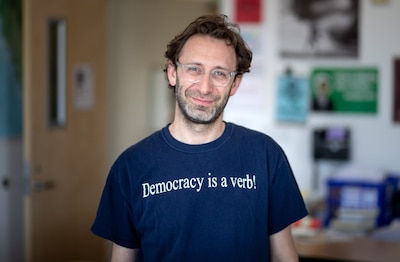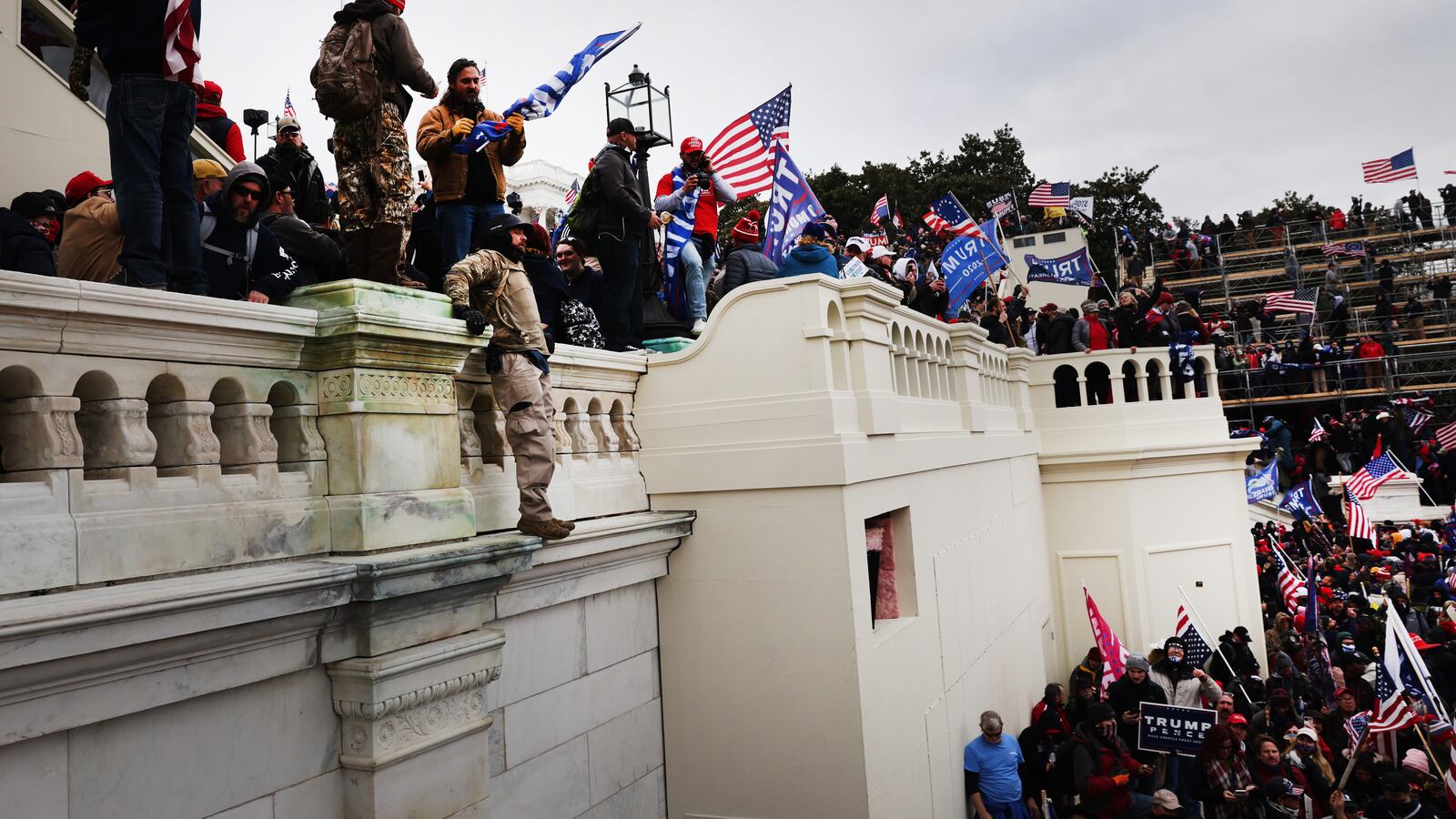“Just another day live teaching an attempted coup from my dining room.” That’s how I described my day Wednesday on social media. The moment felt heavy — disaster layered upon disaster. A crushing pandemic is ravaging our nation and our city, and we had just witnessed an insurrection strike at the heart of American democracy.

My students, of course, show the kind of resilience that feels harder for me to muster. They know the imperfections of this country, of the world, and they are steeled to face it head on. So when I told them there was an attack on the Capitol happening as we Zoomed, and that a band of Trump supporters were there waving Confederate flags and Trump flags, they didn’t seem too fazed. Then again, if they had been fazed, it would have been hard to tell from a bunch of boxes on a computer screen.
As terrifying scenes unfolded in real time, my AP Government students, learning remotely amid the pandemic, took to reliable news sources, explored, and asked the most prescient and pressing questions. All the while, they used their knowledge from our first semester together, and their skills at seeing what was plainly clear: This disgusting, anti-American attack was an assault on the very ideals we’d been studying together. Their questions about how this could happen and what its historical precedents were left me largely without answers, but able to affirm for them that these people were the opposite of patriots.
By the time I logged on to my classes on Thursday, I’d had a chance to process and contextualize what had happened, and to leverage the resources of colleagues near and far who were also preparing to discuss the situation. Those networks gave me context, prompts, and appropriate questions for students in my classes.
I felt ready to address the situation as one that is ongoing, both in its implications and in its process. Students came ready, too, and saw the events through the lens of justice and equity that defines their generation. Why, they asked, did law enforcement treat these rioters with seeming deference, while last summer’s Black Lives Matter protesters faced down armed troops and police violence? If the Capitol is such a storied and important symbol of our nation, how were these thugs almost escorted in, and removed largely without being arrested?
And of course, they wanted to know, what was next for President Donald Trump, who seemed to have lit, placed, and accelerated this fire? What would justice look like for him? Students, some of whom have experienced police violence firsthand, weren’t asking for vengeance or excessive punishment. It was poignant.
I could only tell them that the same systems of white supremacy and systemic racism that felled George Floyd and Breonna Taylor protected these (mostly) white men who acted with impunity. The confidence to come to Washington, to storm the Capitol building, and to ransack the place once they were inside — they were all parts of the same story.
As a white man in America, I know this privilege. Wednesday’s events once again affirmed these wretched traditions for my Black and brown students who know white privilege all too well.
Joel Snyder is a government and economics teacher at Animo Pat Brown Charter High School in the Florence-Firestone neighborhood of Los Angeles. He has been teaching for 18 years, each year believing more and more in the power of youth to fulfill the true promise of our country.



